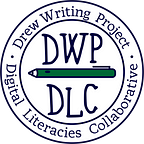How Would This Pandemic Affect My Teaching?
by Joseph S. Pizzo
We were in the midst of a pandemic. With the opening of school being dubious until August of this summer and a hybrid schedule being put into place, I knew that I needed to adjust my teaching strategy to address the needs of my students. COVID-19 had been on our minds for months, and it was not about to disappear. How would this pandemic affect my teaching?
To celebrate the first day of my seventh grade integrated language arts classes, I have traditionally read aloud and discussed Gary Soto’s short story “Seventh Grade.” It is a delightful story about seventh-grader Victor Rodriguez’s attempt to win the heart of his true love Teresa. Once we finish reading the story, my students fashion an original poem featuring their own first day of school experience. The days of alarm clocks, breakfast, rides to school on the bus or in the family car, and reuniting with friends and neighbors have drastically changed this year. Welcome to the world of hybrid education.
My students are now being split into cohorts. Some friends are taking classes on site with the “A” group while the “B” group “attends” via Google Meet. The reverse is true on alternating days. This separation reduces the number of students in class, but it also reduces the students’ opportunities to socialize in person with their friends.
Rather than having the students write about their typical first day of classes, I instead asked them to take a different approach this year. I asked them to address three key areas, one for each stanza in their poems:
- Stanza #1 — Similarities and Differences from Last Year’s Opening Day
- Stanza #2 — Favorable Qualities and Challenges of This Year’s Hybrid Schedule
- Stanza #3 — Hopes Moving Forward into the Remainder of the Year
Many of the students spoke about the lack of opportunity to be with their friends and to eat lunch together. They spoke of frustration with having to spend so much time thinking about social distancing and trying to pay attention when taking classes from home, especially when a sibling is distracting them or their affinity for social media and video games beckons them with siren-like calls.
One student captured the feelings of the majority of the classes. She addressed the aforementioned key areas with insight and a truly poetic vision. Jianna has served as the muse for this assignment.
Unfamiliarity in the Classroom
Jianna F.
No one would ever expect it
Going to school virtually
Coming to school in a restricting mask
Socially distancing from your peers
Going to school day by day in a frightened perspective
The lonely shadow that walks
behind us all through the empty hallways
The quiet lunchroom with no one in it
Sickness in the air as we go class to class
Half our class learning virtually
As we stare at a profile
Hand sanitizer in every classroom
No more group work
No more handouts
Everything is being taken in the span of only a few months
Every face feels blank
Expressions become harder to read
Having only our eyes visible
Every past time feels
empty
lonely
useless
limited
fruitless
Every school day feels like
an endless routine
These shortened days
make going to school discouraging
Why does all classwork
seem more difficult online?
Disorganized docs in every class
“Communication is key”
When has communication
ever felt this challenging to achieve?
How will life
ever go back to normal?
How cautious will our generations be?
How much more sanitary are we going to be?
Jianna’s work is proof that students are most productive when they feel invested in their work. When the assignment is relevant, the passion of the students rises quickly. Their voices are being heard. John Dewey taught us that “Education is not preparation for life; education is life itself.” Education reformer Norman Eng advises us: “Think of yourself less as a teacher and more as a designer of meaningful experiences.”
How has this pandemic affected my teaching this year? It has given me the opportunity to adapt to the needs of the students, whose voices needed an outlet to be heard instead of an assignment that wasn’t relevant under the present-day circumstances of social distancing, hybrid scheduling, sanitizing, and isolation from no-longer-allowed-to-be-near close friends. As we educators design our writing lessons across all curricula to be relevant and inspiring, let’s be sure to heed the observation of Susan Sontag: “A writer, I think, is someone who pays attention to the world” and keep in mind the words of author and educational consultant Ralph Fletcher: “You don’t learn to write by going through a series of preset writing exercises. You learn to write by grappling with a real subject that truly matters to you.” Finally, let’s remember the advice from the Founding Director of the Teachers College Reading and Writing Project at Columbia University, Lucy Calkins: “Teach the writer, not the writing.”
About the author:
The 2020 AMLE National Educator of the Year, Joe Pizzo is an Executive Board Member and former Educator of the Year for NJAMLE and NJCTE. An author, poet, and podcaster (“A Spot of Poetry” and “School Spotlight”), Pizzo is a Leadership Team Member of NJ Schools to Watch. An inaugural member of the WWOR-TV Ch. 9 A+ for Teachers broadcast internationally, Pizzo has served as a member of the NJDoE Council for Teaching and Learning and the Education Committee for NJ Future Ready Schools. An Adj. Prof. at Centenary University and formerly with College of Saint Elizabeth and Union County College, he is an active member of the NJ Autism Think Tank.
